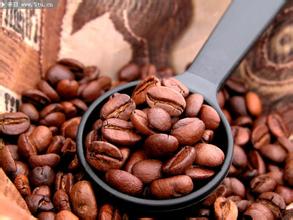A brief introduction to the history of coffee beans in Indonesia
A Brief History of Coffee
In 1696, the Dutch viceroy in Malabar, India, sent a batch of coffee seedlings to the Dutch viceroy in Batavia (present-day Jakarta Jarkata), the first coffee cultivation in Indonesia. However, the first batch of coffee seedlings were washed away by floods. Batavia received gifts again in 1699, this time the coffee seedlings survived and the first harvest was ushered in 1701, starting the coffee journey in Indonesia.
Initially, coffee was grown in Jakarta and nearby areas, and later, the cultivation area gradually expanded to central and eastern Java, Sulawesi, Sumatra and Bali. At the same time, coffee was also grown in Flores and Timor, which were then part of Portugal territory, in eastern Indonesia, but the origins of coffee seedlings were different.
Indonesian coffee was supplied to the European market in 1711, when Indonesia was the first country outside Africa and Arabia to grow coffee on a large scale. In the 1780s it became the world's largest coffee exporter. Java coffee started here.
Indonesia's coffee boom failed to last, and coffee production was fatally hit in the late 18th century when leaf rust, first discovered in West Java, spread rapidly and destroyed Indonesia's Arabica coffee plantations. The leadership of the coffee trade was replaced by the American-producing countries. it is worth mention, however, that this leaf rust disaster did not affect that eastern Indonesian producing region, namely Flores and Timor, where some coffee trees today have genes dating back to the sixteenth and seventeenth century.
According to ICO data, Indonesia ranked third in coffee production in the world in 2013, although 80% was Robusta.

Important Notice :
前街咖啡 FrontStreet Coffee has moved to new addredd:
FrontStreet Coffee Address: 315,Donghua East Road,GuangZhou
Tel:020 38364473
- Prev

Introduction to the treatment of mocha coffee beans
Features: the acidity, aroma and mellow of mocha hot coffee, mixed with the sweetness of warm fresh milk and chocolate syrup, are very suitable for women and people who are afraid of heavy caffeine. Tip: pay attention to the proportion of added portions, fresh milk only needs to be warm. Taste: sweet and mellow. Ingredients: 1 cup of mocha hot coffee, 2 OZ of warm fresh milk, 1 OZ of chocolate syrup, right amount of fresh cream, a little sliced chocolate
- Next

The Development of Costa Rican Coffee
Coffee is an important economic source of Costa Rica. It was introduced in 1808 and has been cultivated for 200 years. Costa Rica has 1x3 population invested in newly developed villa sarchi, newly developed villa sarchi and coffee-related industries. Colombians say that coffee has changed the country and enjoyed a rich environment, and coffee has indeed made an outstanding contribution.
Related
- Does Rose Summer choose Blue, Green or Red? Detailed explanation of Rose Summer Coffee plots and Classification in Panamanian Jade Manor
- What is the difference between the origin, producing area, processing plant, cooperative and manor of coffee beans?
- How fine does the espresso powder fit? how to grind the espresso?
- Sca coffee roasting degree color card coffee roasting degree 8 roasting color values what do you mean?
- The practice of lattes: how to make lattes at home
- Introduction to Indonesian Fine Coffee beans-- Java Coffee producing area of Indonesian Arabica Coffee
- How much will the flavor of light and medium roasted rose summer be expressed? What baking level is rose summer suitable for?
- Introduction to the characteristics of washing, sun-drying or wet-planing coffee commonly used in Mantenin, Indonesia
- Price characteristics of Arabica Coffee Bean Starbucks introduction to Manning Coffee Bean Taste producing area Variety Manor
- What is the authentic Yega flavor? What are the flavor characteristics of the really excellent Yejasuffi coffee beans?

